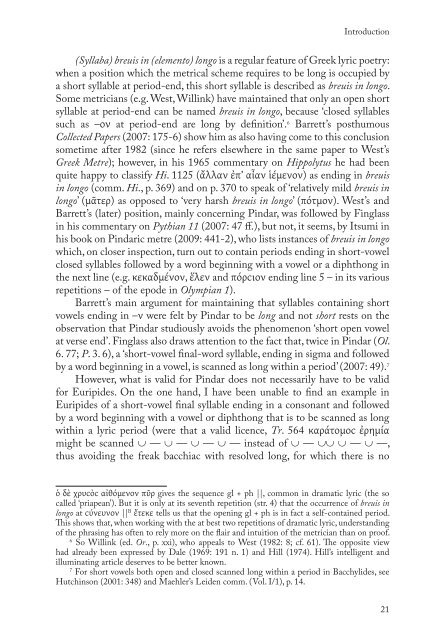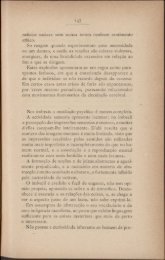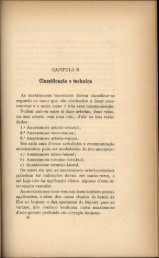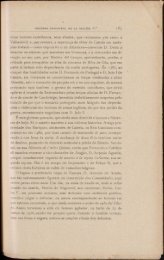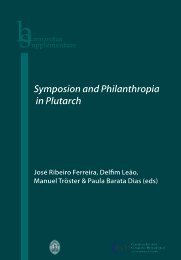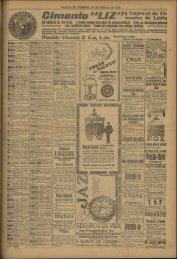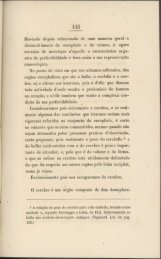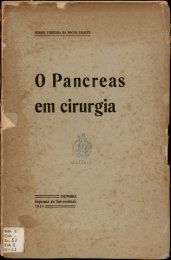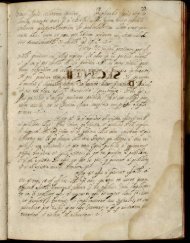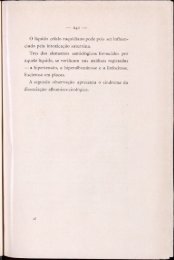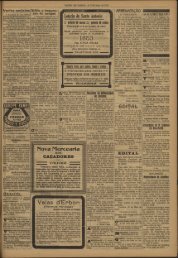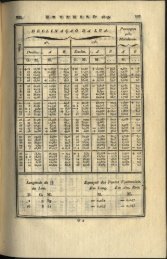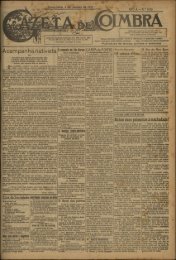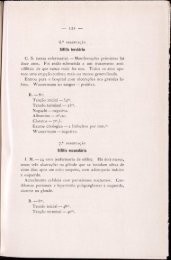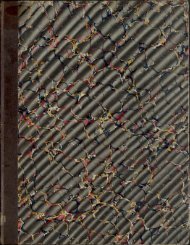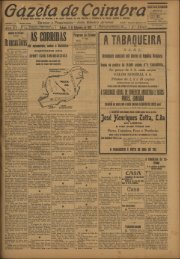Introduction (Syllaba) breuis in (elemento) longo is a regular feature <strong>of</strong> Greek lyric poetry: when a position which the metrical scheme requires to be long is occupied by a short syllable at period-end, this short syllable is <strong>de</strong>scribed as breuis in longo. Some metricians (e.g. West, Willink) have maintained that only an open short syllable at period-end can be named breuis in longo, because ‘closed syllables such as –ον at period-end are long by <strong>de</strong>finition’. 6 Barrett’s posthumous Collected Papers (2007: 175-6) show him as also having come to this conclusion sometime after 1982 (since he refers elsewhere in the same paper to West’s Greek Metre); however, in his 1965 commentary on Hippolytus he had been quite happy to classify Hi. 1125 (ἄλλαν ἐπ’ αἶαν ἱέμενον) as ending in breuis in longo (comm. Hi., p. 369) and on p. 370 to speak <strong>of</strong> ‘relatively mild breuis in longo’ (μᾶτερ) as opposed to ‘very harsh breuis in longo’ (πότμον). West’s and Barrett’s (later) position, mainly concerning Pindar, was followed by Finglass in his commentary on Pythian 11 (2007: 47 ff.), but not, it seems, by Itsumi in his book on Pindaric metre (2009: 441-2), who lists instances <strong>of</strong> breuis in longo which, on closer inspection, turn out to contain periods ending in short-vowel closed syllables followed by a word beginning with a vowel or a diphthong in the next line (e.g. κεκαδμένον, ἕλεν and πόρcιον ending line 5 – in its various repetitions – <strong>of</strong> the epo<strong>de</strong> in Olympian 1). Barrett’s main argument for maintaining that syllables containing short vowels ending in –ν were felt by Pindar to be long and not short rests on the observation that Pindar studiously avoids the phenomenon ‘short open vowel at verse end’. Finglass also draws attention to the fact that, twice in Pindar (Ol. 6. 77; P. 3. 6), a ‘short-vowel final-word syllable, ending in sigma and followed by a word beginning in a vowel, is scanned as long within a period’ (2007: 49). 7 However, what is valid for Pindar does not necessarily have to be valid for Euripi<strong>de</strong>s. On the one hand, I have been unable to find an example in Euripi<strong>de</strong>s <strong>of</strong> a short-vowel final syllable ending in a consonant and followed by a word beginning with a vowel or diphthong that is to be scanned as long within a lyric period (were that a valid licence, Tr. 564 καράτομοc ἐρημία might be scanned ∪ — ∪ — ∪ — ∪ — instead <strong>of</strong> ∪ — ∪∪ ∪ — ∪ —, thus avoiding the freak bacchiac with resolved long, for which there is no ὁ δὲ χρυcὸc αἰθόμενον πῦρ gives the sequence gl + ph ||, common in dramatic lyric (the so called ‘priapean’). But it is only at its seventh repetition (str. 4) that the occurrence <strong>of</strong> breuis in longo at cύνευνον || B ἔτεκε tells us that the opening gl + ph is in fact a self-contained period. This shows that, when working with the at best two repetitions <strong>of</strong> dramatic lyric, un<strong>de</strong>rstanding <strong>of</strong> the phrasing has <strong>of</strong>ten to rely more on the flair and intuition <strong>of</strong> the metrician than on pro<strong>of</strong>. 6 So Willink (ed. Or., p. xxi), who appeals to West (1982: 8; cf. 61). <strong>The</strong> opposite view had already been expressed by Dale (1969: 191 n. 1) and Hill (1974). Hill’s intelligent and illuminating article <strong>de</strong>serves to be better known. 7 For short vowels both open and closed scanned long within a period in Bacchyli<strong>de</strong>s, see Hutchinson (2001: 348) and Maehler’s Lei<strong>de</strong>n comm. (Vol. I/1), p. 14. 21
Part I - Euripi<strong>de</strong>s’ use <strong>of</strong> lyric metre other secure parallel in Euripi<strong>de</strong>s – but even here Dale, Stinton, Parker and Diggle all scan καράτομοc ∪ — ∪∪ 8 ). On the other hand, that Euripi<strong>de</strong>s (or Aeschylus for that matter: cf. Dover, Frogs p. 362) did not avoid open short-vowel syllables at period-end can be seen from the following list <strong>of</strong> all instances <strong>of</strong> breuis in longo that I find in the extant corpus (lines that feature blunt endings are highlighted in bold type): 22 A. ‘Open’ breuis in longo: Alc. 219 (~ 231 closed breuis), 874~891, 970 (~981 closed breuis), Med. 147, 860, 1288, Hcld. 90, 101, Hi. 58, 60, 368, 775 (|||), 1388b (|||), Andr. 115, 299~307, 512~534, 1219, 1223, 1225 (|||), Hec. 922 (|||), 1094, 1095, Su. 62 (|||), 366 (~ 379 closed breuis), 376 (|||), 607 (|||), 625 (|||), 804, 808, 810 (|||), 827, 924 (|||), 992~1014, 1002~1025, 1030 (|||), 1125, El. 113~128, 189 (|||), 465, 480, 1205 (|||), 1226 (|||), Herc. 358 (|||), 383 (~ 397 closed breuis), 764, 780 (|||), 789 (|||), 791, 881, 894, 1017, 1069, 1075, Tr. 193a, 816, 844, 1235, 1305~1320, IT 647, 843, 884, 899, †1132†, 1142, 1264 (~ 1239 closed breuis), Ion 763a, 1476, 1507, Hel. 369b, 644, 664b, Ph. 148, 213 (|||), 238 (|||), †301†, 313, 315, 338a, 1052, 1053, 1293, 1756, 1757, Or. 167~188, 169 (~190 closed breuis), 200 (~179 closed breuis), 984a, 1359, 1371, 1379, 1499, Ba. 143, 1161, 1175, 1182, 1198, IA 282 (?), 285, 300, †589†, Rh. 462 (?), 528, 697, 909, Cycl. 73 (?). B. ‘Closed’ breuis in longo Final word ending in -ν Alc. 231, 981, Med. 133, 427, Hcld. 376, 608, Hi. 572, 581, 757~769 (? cf. below, p. 75, n. 157), 1125~1136, 1146, 1377, Andr. 105, 111, 485 (|||), 781, 835, Hec. 72, 83, 684, 705, 947, 952 (|||), 1097, Su. 821, 834, 970 (|||), 1003, 1148, El. 124 (|||), 475 (|||), 1162, 1164 (|||), 1207, 1232 (|||), Herc. 354, 393 (|||), 397, 663, 684, 689, 887b, 1025, 1036, 1084, 1086, 1201, 1213, Tr. 133, 158, 167, 175 (|||), 279, 325, 340b (|||), 577, 1105, 1117 (|||), IT 147, 231, 406 (|||), 899, 1112, 1239, Ion 140, 213a~ 231b (?), 213b, 458~478, 765, 901, Hel. 183, 210 (|||), 252 (|||), 516, 1109b~1124b, Ph. 152, 158, 168, 230, †303†, 677, 1028, 1532, Or. 179, 1358, 1396, 1464b, 1488b, Ba. 88 (|||), 413, 588, 987, 1153, 1172, IA 209, 214, 251, 794 (?), 1066, 1084, 1091, 1311, 1330, 1480, Rh. 49, 260, Cycl. 72, 662 (|||), Phaeth. 240, Hyps. 39, 46 (?), 271, 274, Teleph. II.5. 8 Cf. Dale ( 2 1968: 74), Stinton (1990: 124), Diggle (1981: 19; 1994: 259 n. 30, 376 n. 37), Parker (1997: 413). See below, p. 235 (n. 89).
- Page 1 and 2: The Lyric Metres of Euripidean Dram
- Page 3 and 4: Author Frederico Lourenço Title Th
- Page 5 and 6: 6.1.3. ‘xDx’ (erasmonidean) 73
- Page 7 and 8: Preface O triunfo da ἱστορί
- Page 9 and 10: O triunfo da ἱστορία sobre
- Page 11 and 12: SymbolS Metrical Symbols O triunfo
- Page 13 and 14: O triunfo da ἱστορία sobre
- Page 15 and 16: Part I Euripides’ use of lyric me
- Page 17: Part I - Euripides’ use of lyric
- Page 21 and 22: Part I - Euripides’ use of lyric
- Page 23 and 24: Part I - Euripides’ use of lyric
- Page 25 and 26: 120-1 Part I - Euripides’ use of
- Page 27 and 28: Part I - Euripides’ use of lyric
- Page 29 and 30: Part I - Euripides’ use of lyric
- Page 31 and 32: Part I - Euripides’ use of lyric
- Page 33 and 34: Part I - Euripides’ use of lyric
- Page 35 and 36: Part I - Euripides’ use of lyric
- Page 37 and 38: Part I - Euripides’ use of lyric
- Page 39 and 40: Part I - Euripides’ use of lyric
- Page 41 and 42: Part I - Euripides’ use of lyric
- Page 43 and 44: Part I - Euripides’ use of lyric
- Page 45 and 46: Part I - Euripides’ use of lyric
- Page 47 and 48: Part I - Euripides’ use of lyric
- Page 49 and 50: 4.Dochmiac Dochmiac Dochmiac rhythm
- Page 51 and 52: 100 ἐc θεούc, τύχαι cο
- Page 53 and 54: Πρίαμοc ὅθι ποτὲ β
- Page 55 and 56: Dochmiac she does not tell us where
- Page 57 and 58: Dochmiac (3) ∪ — ∪∪ ∪ —
- Page 59 and 60: (21) — ∪∪ ∪∪ — ∪∪:
- Page 61 and 62: 5. Dactylic Dactylic In Greek drama
- Page 63 and 64: Dactylic — ∪ ∪ — ∪ ∪
- Page 65 and 66: Dactylic Or. 1395 (followed by chan
- Page 67 and 68: Part I - Euripides’ use of lyric
- Page 69 and 70:
Part I - Euripides’ use of lyric
- Page 71 and 72:
Part I - Euripides’ use of lyric
- Page 73 and 74:
Part I - Euripides’ use of lyric
- Page 75 and 76:
7.Dactylo-epitrite Dactylo-epitrite
- Page 77 and 78:
Dactylo-epitrite — — ∪ ∪
- Page 79 and 80:
Dactylo-epitrite Ion 769, Hel. 686,
- Page 81 and 82:
8. Ionic Ionic Ionic is hardly ever
- Page 83 and 84:
8.4. Lengths with ‘iambic’ pref
- Page 85 and 86:
Part I - Euripides’ use of lyric
- Page 87 and 88:
Part I - Euripides’ use of lyric
- Page 89 and 90:
Part I - Euripides’ use of lyric
- Page 91 and 92:
Part I - Euripides’ use of lyric
- Page 93 and 94:
Part I - Euripides’ use of lyric
- Page 95 and 96:
Part I - Euripides’ use of lyric
- Page 97 and 98:
Part I - Euripides’ use of lyric
- Page 99 and 100:
Part I - Euripides’ use of lyric
- Page 101 and 102:
Part I - Euripides’ use of lyric
- Page 103 and 104:
Part I - Euripides’ use of lyric
- Page 105 and 106:
Part I - Euripides’ use of lyric
- Page 107 and 108:
Part I - Euripides’ use of lyric
- Page 109 and 110:
Part I - Euripides’ use of lyric
- Page 111 and 112:
Part I - Euripides’ use of lyric
- Page 113 and 114:
Part I - Euripides’ use of lyric
- Page 115 and 116:
Part I - Euripides’ use of lyric
- Page 117 and 118:
Part I - Euripides’ use of lyric
- Page 119 and 120:
Part I - Euripides’ use of lyric
- Page 121 and 122:
Part I - Euripides’ use of lyric
- Page 123 and 124:
Introductory Note Cyclops In the in
- Page 125 and 126:
Part II - Scansions 134 68 — —
- Page 127 and 128:
Part II - Scansions Cycl. 608-623
- Page 129 and 130:
Part II - Scansions 138 107 — —
- Page 131 and 132:
Part II - Scansions Strophe 2 ~ 252
- Page 133 and 134:
Part II - Scansions Strophe 215 ~ 4
- Page 135 and 136:
Part II - Scansions κομμόc (Al
- Page 137 and 138:
Part II - Scansions 146 1002 —
- Page 139 and 140:
Part II - Scansions 153 — — ∪
- Page 141 and 142:
Part II - Scansions Second Stasimon
- Page 143 and 144:
Part II - Scansions Fourth Stasimon
- Page 145 and 146:
Part II - Scansions 154 1285 ∪
- Page 147 and 148:
Part II - Scansions First Stasimon
- Page 149 and 150:
Part II - Scansions 158 764 — —
- Page 151 and 152:
Hippolytus Hippolytus Similarly to
- Page 153 and 154:
Hippolytus 164 — — — ∪ ∪
- Page 155 and 156:
Hippolytus 538 ∪ — ∪ ∪ —
- Page 157 and 158:
Hippolytus 743 ∪ ∪ — ∪ —
- Page 159 and 160:
Hippolytus 851 ∪ — — ∪ —
- Page 161 and 162:
Hippolytus 1272 ∪ — — ∪ —
- Page 163 and 164:
Part II - Scansions 174 129 — ∪
- Page 165 and 166:
Part II - Scansions 176 475 — —
- Page 167 and 168:
Part II - Scansions ~ antistrophe 7
- Page 169 and 170:
Part II - Scansions 180 865 — ∪
- Page 171 and 172:
Part II - Scansions Χο. 1204 ∪
- Page 173 and 174:
Part II - Scansions 184 165 — ∪
- Page 175 and 176:
Part II - Scansions 186 459 — —
- Page 177 and 178:
Part II - Scansions Εκ. 694 —
- Page 179 and 180:
Part II - Scansions Hec. 1024-1034
- Page 181 and 182:
Parodos (Su. 42-86) Supplices Hecub
- Page 183 and 184:
First Stasimon (Su. 365-380) Suppli
- Page 185 and 186:
Supplices 782 ∪ — ∪ — —
- Page 187 and 188:
Supplices ~ antistrophe 963 — ∪
- Page 189 and 190:
Κομμόc (Su. 1123-1163) Supplic
- Page 191 and 192:
Monody (El. 112-166) Electra Suppli
- Page 193 and 194:
Parodos (El. 167-212) Electra Strop
- Page 195 and 196:
451 ∪ ∪ ∪ — ∪ ∪ — —
- Page 197 and 198:
Electra 722 ∪ ∪ — ∪ ∪ —
- Page 199 and 200:
κομμόc (El. 1177-1232) Electra
- Page 201 and 202:
Electra 1228 — ∪ — ∪ —
- Page 203 and 204:
Part II - Scansions 216 134 — ∪
- Page 205 and 206:
Part II - Scansions 218 400 — ∪
- Page 207 and 208:
Part II - Scansions 220 665 — —
- Page 209 and 210:
Part II - Scansions 222 765 ∪ —
- Page 211 and 212:
Part II - Scansions Αμ. 891 ∪
- Page 213 and 214:
Part II - Scansions Αμ. 1047 ∪
- Page 215 and 216:
Part II - Scansions Θη. 1185 —
- Page 217 and 218:
Part II - Scansions Parodos (Tr. 15
- Page 219 and 220:
Part II - Scansions 232 206 — ∪
- Page 221 and 222:
Part II - Scansions Τα. 264 —
- Page 223 and 224:
Part II - Scansions 236 330 ∪ —
- Page 225 and 226:
Part II - Scansions Duet (Tr. 577-6
- Page 227 and 228:
Part II - Scansions ~ antistrophe 1
- Page 229 and 230:
Part II - Scansions 242 1087 —
- Page 231 and 232:
Part II - Scansions Χο. 1298 ∪
- Page 233 and 234:
Parodos (IT 123-235) Iphigenia in T
- Page 235 and 236:
Iphigenia in Tauris 197 † ∪ ∪
- Page 237 and 238:
Iphigenia in Tauris 429 — — ∪
- Page 239 and 240:
Iphigenia in Tauris 851 — — ∪
- Page 241 and 242:
Iphigenia in Tauris 1118 — —
- Page 243 and 244:
Iphigenia in Tauris 1242 — —
- Page 245 and 246:
Part II - Scansions 260 140 — —
- Page 247 and 248:
Part II - Scansions 262 208 † —
- Page 249 and 250:
Part II - Scansions 264 489 ∪ ∪
- Page 251 and 252:
Part II - Scansions Χο. 754 ∪
- Page 253 and 254:
Part II - Scansions 268 862 ∪ ∪
- Page 255 and 256:
Part II - Scansions ~ antistrophe 1
- Page 257 and 258:
Part II - Scansions Κρ. 1445 ∪
- Page 259 and 260:
Part II - Scansions 1494 ∪ ∪
- Page 261 and 262:
Part II - Scansions 276 190 — ∪
- Page 263 and 264:
Part II - Scansions Ελ. 335 ∪
- Page 265 and 266:
Part II - Scansions 280 524 ∪ —
- Page 267 and 268:
Part II - Scansions Ελ. 670 ∪
- Page 269 and 270:
Part II - Scansions 284 1132 ∪
- Page 271 and 272:
Part II - Scansions 286 1340 —
- Page 273 and 274:
Part II - Scansions 288 1489 —
- Page 275 and 276:
Part II - Scansions 124 3 ia 125 3
- Page 277 and 278:
Part II - Scansions 292 188 ∪ —
- Page 279 and 280:
Part II - Scansions 294 294 ∪ —
- Page 281 and 282:
Part II - Scansions 296 650 † ? 6
- Page 283 and 284:
Part II - Scansions 298 809 — ∪
- Page 285 and 286:
Part II - Scansions 300 1064 —
- Page 287 and 288:
Part II - Scansions 302 1537 ∪
- Page 289 and 290:
Part II - Scansions Οι. 1723 ∪
- Page 291 and 292:
Parodos (Or. 141-207) Orestes Orest
- Page 293 and 294:
Orestes Ηλ. 188 ∪ — ∪ —
- Page 295 and 296:
Orestes 822 ∪ ∪ ∪ — — —
- Page 297 and 298:
Orestes 1001 ∪∪ ∪ — ∪ —
- Page 299 and 300:
Orestes Ηλ. 1292 — — ∪ —
- Page 301 and 302:
Orestes 1396 — ∪ — ∪ —
- Page 303 and 304:
Orestes 1466 — — — ∪ —
- Page 305 and 306:
Bacchae Bacchae Parodos (Ba. 64-169
- Page 307 and 308:
Bacchae 127 ∪ ∪ ∪ — ∪ ∪
- Page 309 and 310:
Bacchae 407 — ∪ — ∪ ∪ —
- Page 311 and 312:
Bacchae 571-2 — ∪ — ∪ ∪
- Page 313 and 314:
Bacchae 888 — — — ∪ ∪ —
- Page 315 and 316:
Bacchae 1021 ∪ — — ∪ —
- Page 317 and 318:
Bacchae Αγ. 1193 ∪ — — : :
- Page 319 and 320:
Part II - Scansions 336 176 — ∪
- Page 321 and 322:
Part II - Scansions 338 248 — —
- Page 323 and 324:
Part II - Scansions ~ antistrophe 5
- Page 325 and 326:
Part II - Scansions 342 790 — —
- Page 327 and 328:
Part II - Scansions 344 1097 —
- Page 329 and 330:
Part II - Scansions 1496 ∪∪ ∪
- Page 331 and 332:
Parodos (Rh. 23-51) Rhesus Rhesus S
- Page 333 and 334:
Rhesus 249 ∪ ∪ — ∪ ∪ —
- Page 335 and 336:
Rhesus 465 — ∪ — ∪ — ∪
- Page 337 and 338:
Rhesus 704 — — ∪ — — —
- Page 339 and 340:
Parodos (Phaeth. 63-101) Phaethon P
- Page 341 and 342:
Phaethon 241 — ∪ — — —
- Page 343 and 344:
Part II - Scansions Hypsipyle’s M
- Page 345 and 346:
Part II - Scansions Fr. 8/9 p. 33 B
- Page 347 and 348:
Part II - Scansions 366 Erechtheus
- Page 349 and 350:
I. Editions Bibliography Conclusion
- Page 351 and 352:
Euripides Alcestis A. M. Dale, Oxfo
- Page 353 and 354:
Electra P. J. Finglass, Cambridge,
- Page 355 and 356:
Conclusiones M. De Poli (2006), “
- Page 357 and 358:
Conclusiones V. Liapis (2009), “R
- Page 359 and 360:
Conclusiones O. Schroeder (1910, 2
- Page 361 and 362:
Index locorvm Persae (cont.) 656: 7
- Page 363 and 364:
Index locorvm Cyclops (cont.) 81: 4
- Page 365 and 366:
Index locorvm Alcestis (cont.) 577:
- Page 367 and 368:
Index locorvm Medea (cont.) 655: 10
- Page 369 and 370:
Index locorvm Heraclidae (cont.) 77
- Page 371 and 372:
Index locorvm Hippolytus (cont.) 67
- Page 373 and 374:
Index locorvm Andromache (cont.) 28
- Page 375 and 376:
Index locorvm Hecuba 68: 46 (n. 78)
- Page 377 and 378:
Index locorvm Hecuba (cont.) 1025:
- Page 379 and 380:
Index locorvm Supplices (cont.) 827
- Page 381 and 382:
Index locorvm Electra (cont.) 436:
- Page 383 and 384:
Index locorvm Heracles (cont.) 134:
- Page 385 and 386:
Index locorvm Heracles (cont.) 784:
- Page 387 and 388:
Index locorvm Troades (cont.) 162:
- Page 389 and 390:
Index locorvm Troades (cont.) 593:
- Page 391 and 392:
Index locorvm Iphigenia in Tauris (
- Page 393 and 394:
Index locorvm Iphigenia in Tauris (
- Page 395 and 396:
Index locorvm Ion (cont.) 481: 96 (
- Page 397 and 398:
Index locorvm Ion (cont.) 1102: 108
- Page 399 and 400:
Index locorvm Helena (cont.) 645: 6
- Page 401 and 402:
Index locorvm Helena (cont.) 1501:
- Page 403 and 404:
Index locorvm Phoenissae (cont.) 78
- Page 405 and 406:
Index locorvm Phoenissae (cont.) 15
- Page 407 and 408:
Index locorvm Orestes (cont.) 977:
- Page 409 and 410:
Index locorvm Orestes (cont.) 1489:
- Page 411 and 412:
Index locorvm Bacchae (cont.) 541:
- Page 413 and 414:
Index locorvm Iphigenia Aulidensis
- Page 415 and 416:
Index locorvm Iphigenia Aulidensis
- Page 417 and 418:
Index locorvm Iphigenia Aulidensis
- Page 419 and 420:
Index locorvm Rhesus (cont.) 554: 9
- Page 421 and 422:
Index locorvm Phaethon (cont.) 67:
- Page 423 and 424:
Index locorvm Antigone (cont.) 1289
- Page 425 and 426:
‘A’: 54, 76-7, 84 (n. 176). Ado
- Page 427 and 428:
Dovetailing (see also under ‘Over
- Page 429 and 430:
Trochaic: 20, 27, 29, 31, 33, 35 ff
- Page 431:
This is the first complete survey t


